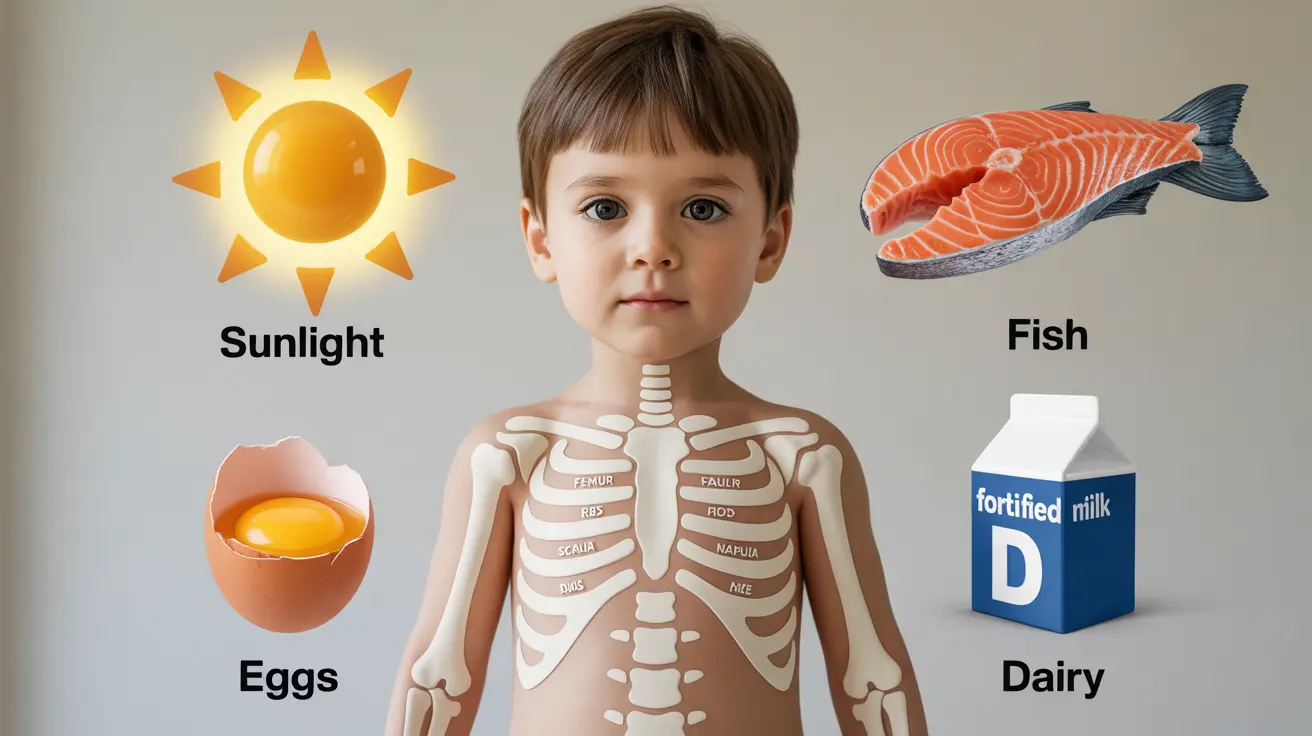Understanding vitamin D deficiency in children and teenagers is crucial for their healthy development and overall well-being. As a vital nutrient that plays multiple roles in the body, vitamin D deficiency can significantly impact a child's growth, bone health, and immune system function. This comprehensive guide will help you identify the signs of vitamin D deficiency and understand how to address this common nutritional concern.
Understanding Vitamin D's Role in Child Development
Vitamin D is essential for calcium absorption, bone mineralization, and immune system function. Children need adequate vitamin D levels to support their rapid growth and development, particularly during crucial developmental stages. Without sufficient vitamin D, children may face various health challenges that can affect their immediate and long-term well-being.
Key Signs of Vitamin D Deficiency in Children
Physical Symptoms
Children with vitamin D deficiency often display several noticeable physical signs:
- Delayed growth or slow growth rate
- Frequent bone fractures
- Muscle weakness or pain
- Delayed tooth development
- Bone pain or tenderness
- Poor posture
- Delayed walking in toddlers
Behavioral and Mental Signs
Vitamin D deficiency can also manifest through behavioral changes:
- Increased irritability
- Fatigue and tiredness
- Difficulty concentrating
- Changes in mood
- Poor sleep patterns
- Decreased physical activity
- Low energy levels
Risk Factors for Vitamin D Deficiency
Several factors can contribute to vitamin D deficiency in children:
- Limited sun exposure
- Dark skin pigmentation
- Obesity
- Poor dietary choices
- Living in northern latitudes
- Exclusively indoor activities
- Certain medical conditions affecting absorption
Prevention and Treatment Strategies
Dietary Sources
Incorporating vitamin D-rich foods into your child's diet is essential:
- Fatty fish (salmon, mackerel)
- Egg yolks
- Fortified dairy products
- Fortified cereals
- Mushrooms exposed to UV light
Lifestyle Modifications
Making certain lifestyle changes can help maintain healthy vitamin D levels:
- Safe sun exposure (10-15 minutes daily)
- Regular outdoor physical activity
- Balanced diet rich in vitamin D
- Regular health check-ups
- Proper supplementation when recommended by healthcare providers
Frequently Asked Questions
What are the common signs and symptoms of vitamin D deficiency in children and teens? Common signs include muscle weakness, bone pain, frequent fractures, delayed growth, fatigue, and mood changes. Some children may also experience delayed tooth development and poor posture.
How can vitamin D deficiency affect a child's bone growth and development? Vitamin D deficiency can significantly impact bone mineralization, leading to weak or soft bones, increased risk of fractures, and conditions like rickets. It may also affect overall growth and physical development.
What causes vitamin D deficiency in kids and how can it be prevented? Common causes include limited sun exposure, poor diet, dark skin pigmentation, and certain medical conditions. Prevention involves adequate sun exposure, vitamin D-rich foods, and supplements when recommended by healthcare providers.
When and how should children be given vitamin D supplements? Vitamin D supplementation should be discussed with a healthcare provider who can recommend appropriate dosage based on the child's age, weight, and specific needs. Some children may need daily supplements, while others might maintain adequate levels through diet and sun exposure.
Can vitamin D deficiency lead to serious health problems like rickets or frequent bone fractures in children? Yes, severe vitamin D deficiency can lead to rickets, a condition causing soft and weak bones. It can also increase the risk of frequent fractures, delayed growth, and other bone-related complications.
Regular monitoring of vitamin D levels and maintaining proper nutrition can help ensure optimal growth and development in children. Always consult with healthcare providers for personalized advice regarding vitamin D supplementation and management.




